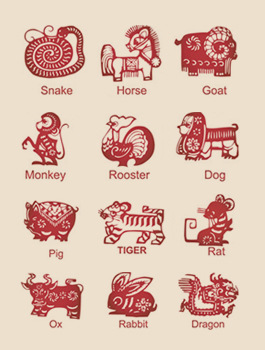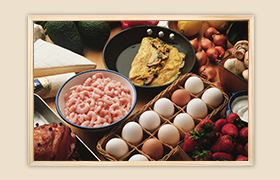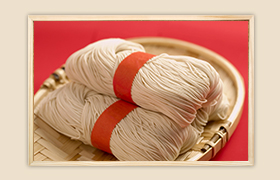Chinese Medicinal Cuisine
(Chinadaily.com.cn)
Updated: 2013-02-05
Seasonal Recipes It is interesting that the Chinese believe that eating seasonal food is generally the best. For example, in the summer, yin foods like melons and cucumber are available; and in the winter, high yang foods like garlic and onions are available for consumption as well as easily stored red pepper and other high yang herbs.
It is as if nature produces the right healing foods for each season for people. For example, during cold and flu season in the late fall and winter, people would refrain from eating melons when they have a cold. And if one gets sunstroke from hot Chinese summer days, one would avoid garlic and onions.
So according to the tradition, here are recipes of commonly available ingredients that you can prepare yourself to maintain your health. The following recipes use common ingredients that you can make for each season for the year.
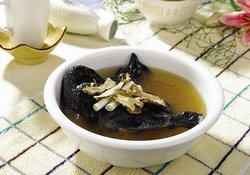
Winter: Chicken and Ginger Soup Recipe Just like Westerners, Chinese people like to drink lots of hot soup on cold winter days. Their idea is to make soups with high yang vegetables and herbs, and include meat to balance the dish. A favorite winter soup, just like in the West, is chicken soup.
Take chicken portions and boil them together with two chopped potatoes, or half a bailoubo (the long white Chinese turnip), and 1 tablespoon of ginger. When the potato and chicken pieces are somewhat cooked, add diced vegetables and spices.
The diced vegetables should include three diced cloves of garlic and 1 chopped onion, since these are essential for adding yang. You can also include a cup of carrots, a cup of mushrooms, a cup of zucchini or bok choy, or other similar vegetables.
To the mix, add 1 teaspoon of sea salt, and add additional herbs, such as several thin-sliced pieces of huangqi (黄芪 huángqí, astragalus root), or pinches of turmeric, if you wish. If you like red pepper, add that for a zang!
Spring: Asparagus and Vinegar Recipe
In the spring, things come alive and start growing. It is important for living things to have more than usual yang for growth.
It is thought that the liver and gallbladder are especially important at this time. It is important to eat the green seasonal vegetables that sprout out at these times since they supply the necessary yang and help to nourish the liver.
“Green is the color of the liver and of spring” is a saying. So eat the fresh leafy greens and sprouts that are available. And drink fresh sour juices, since these stimulate the qi.
It is also thought to be a time when the body does a “spring cleaning” on itself by getting rid of stored fats and meat, so eating less meat and fat is considered to be better for health. Here is a light and easy-to-make vegetarian dish and drink that is a good example of a springtime meal.
Wash a bunch of asparagus and a carrot in clean water without detergent. Then chop up the vegetables and lightly steam them until the asparagus is slightly tender and bright green. Note that the vegetables cook quickly so don’t steam them long.
Prepare a dressing by simply adding about two parts of virgin olive oil to one part of plum vinegar or apple cider vinegar. Plum vinegar is preferred, because it is a springtime fruit. Then pour the dressing on the vegetables and enjoy the dish with some lemonade.
To make the lemonade, simply squeeze a fresh lemon and add the juice to clean water.
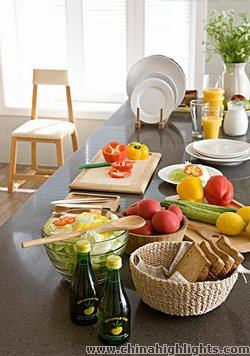
Summer: Tomato and Cucumber Salad Recipe
Here is a favorite dish for summer when the yang is naturally high, and you need to cool down a bit. Tomato and cucumber are high yin vegetables that are readily available.
Try to find fresh and ripe ingredients. Dice some red onion, or if that is unavailable, dice a regular onion, and chop up tomatoes and cucumbers. Mix up the ingredients with virgin olive oil, and add some dill, salt, and pepper to taste. It is simple to make and great for hot summer days.
Autumn: Butternut Squash Soup Recipe
In the autumn, life naturally ebbs away, and it is thought that the qi returns to the earth. In the human body, the qi goes inwards into the body’s core.
Eating the vegetables and fruits that are available at these times helps your body to transition and stay healthy. Here is a recipe for butternut squash soup, but pumpkin or other kinds of squash can be substituted.
Take a large butternut squash or an equivalently-sized pumpkin or other squash, a medium onion, two cloves of garlic, a stalk of celery, a large carrot, some boiled chicken meat, and salt, pepper, cinnamon, and nutmeg to taste.
Chop up and dice everything, and first boil the squash in water in a large pot. Then when the squash is almost cooked, add the rest of the vegetables and the already cooked chicken chunks, and simmer the soup for a few minutes. Then when the soup is done and cooled a little, add in the spice and mix it well.
You’ll have a pot of delicious chunky chicken and vegetable soup. But if you have a blender available, you can blend the soup in a blender if you want to until the soup is smooth. Then reheat the soup if you want.
Not Only What You Eat, But How You Eat: Mealtime Principles According to Traditional Chinese Medicine
The ancient texts described not only what to prepare for meals, but also how to eat meals. If you eat meals with mainland Chinese people, you might be surprised at their attitude and customs about eating meals that have been part of the culture for hundreds of years.
Here are principals for eating well according to Chinese traditional medicine:
Try to avoid overly processed food. Eat naturally. Eat seasonal vegetables and fruits. Always make sure the vegetables are cooked. Sit down to eat at a quiet place. Chew the food well. Eat slowly. Pay attention to your eating, and get away from distractions*. Do not skip meals. After lunch, take a nap or rest for a while.




